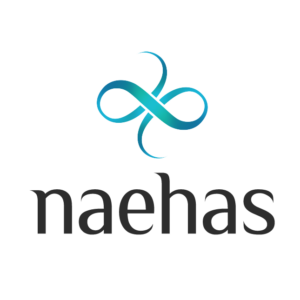Digital transformation, coupled with an increased need for hyper-personalized products and services, is pushing many companies to rethink how they manage their disclosure process. This message is ringing loud and clear across the financial services industry in ever-changing times. A pair of our solutions team members recently joined forces with two top consultants from the global leader that is Capgemini to create an informative eBook focused on Disclosure Management. Here, then, key takeaways on best practices, with thanks to the contributors (who we share more about at the end of this piece) with whom we spoke about this hot topic.
The Digital Transformation of Disclosure Management
 The distribution of required disclosures in complex regulatory environments can comprise more than 60% of communications sent to customers. The often manual, inefficient, and inconsistent distribution processes can be costly and risky: a small mistake or typo delivered to a customer can lead to substantial legal and monetary consequences.
The distribution of required disclosures in complex regulatory environments can comprise more than 60% of communications sent to customers. The often manual, inefficient, and inconsistent distribution processes can be costly and risky: a small mistake or typo delivered to a customer can lead to substantial legal and monetary consequences.
Managing disclosures is not easy. Many companies have numerous disclosure variations driven by factors such as multiple products, channels, geographic location, and customer life cycle. As these companies grow their product portfolio, channel touchpoints, and international presence, they can easily find themselves managing thousands of standalone disclosure versions.
Moreover, increasingly frequent changes in regulations and reference interest rates require constant disclosure updates. Without a disclosure management solution, such changes typically involve manual editing of offline documents scattered across the company. It is no surprise that many companies invest considerable time and resources just to manage their disclosures.
Common problems of unrefined disclosure management processes include:
- Heightened compliance risk from errors, backlogged updates, poor visibility, and low auditability
- Inefficient use of employees and technology resources
- Lengthy cycle times that slow marketing efforts and hinder scalability
- Inconsistent channel experiences during the customer journey
- Loss of competitive edge and speed to market
Defining, and Finding, Excellence in Disclosure Management
Every financial services institution is, quite understandably, both customer obsessed and compliance obsessed. Those charged with marketing offers and disclosure management face daunting but doable tasks, day in and day out.
 It’s a tall order. And it takes a virtual village to manage the many omnichannel marktech musts in enterprises large and small, new and established, regulated and soon-to-be regulated.
It’s a tall order. And it takes a virtual village to manage the many omnichannel marktech musts in enterprises large and small, new and established, regulated and soon-to-be regulated.
Landing and expanding customer relationships is critical to securing sustainable financial goals and remaining competitive, all while focusing on time to market and navigating a fast-changing, fast-paced environment. Laser focused on regulatory compliance, banks, wealth management firms, fintech companies are increasingly seeking solutions partners who can deliver significant operational benefits, while also working on another top priority: reducing risk.
For those wearing any of the many hats involved in disclosure management – from marketing, operations, compliance, risk mitigation, legal, IT, digital services, fulfillment, etc., – this brief overview offers valuable, actionable insights on how leading finserv companies drive results by leveraging partners and platforms that help them do disclosures and compliance better.
Capgemini and Naehas work collaboratively with clients to transform the disclosure management process, with a strong focus on regulatory and ESG disclosures, by leveraging the Naehas Disclosure Management platform for a scalable solution.
The solution can be described best in these 6 ways:
1. Fully configurable and modular
Makes implementation faster and easier than other solutions without the need for technical resources.
2. Designed specifically for financial services companies
3. Provides end-to-end workflows
Includes everything from template design (built-in template editors, including Adobe INDD) to publishing (printed mail, email, and headless export to any system).
4. Offers full auditability for every change
Allows easy search through any user action at any time to ensure the right person gets the right disclosure with complete readiness for attestation.
5. Flexible to manage all types of disclosures
Provides comprehensive coverage for static
documents to fully automated omnichannel
composition based on business rules.
6. AI-augmented for collaborative review with industry specific checklists
Case Study: Reducing cycle time and minimizing regulatory risk
Capgemini and Naehas partnered to transform the disclosure management process for a large wealth and asset management company. The company struggled with disparate systems, duplicative activities, and an inconsistent process for different types of disclosures.
 Cycle times were long, and they had no visibility into changes that were in process. The Capgemini and Naehas team performed an in-depth current state assessment to help the company clearly understand its problems and challenges. They used benchmarking metrics to compare the company against clients of different sizes across the industry.
Cycle times were long, and they had no visibility into changes that were in process. The Capgemini and Naehas team performed an in-depth current state assessment to help the company clearly understand its problems and challenges. They used benchmarking metrics to compare the company against clients of different sizes across the industry.
The team then redesigned business processes for all disclosure types and provided a comprehensive set of future-state blueprints and next steps. This optimized the entire disclosure management process including technical design and implementation, updated governance, and
stakeholder responsibilities.
Results of the Naehas and Capgemini solution
- Cycle time reduced from weeks to days using a scalable workflow, managed end-to-end from a single platform
- Volume of repositories requiring management cut in half streamlining content management for various regulatory disclosures
- Resources required to implement changes reduced by more than 50% via automated processes
- Percentage of matters requiring attention reduced to less than 2%
- Improved user experience through business-configurable processes and a simplified interface
Best-in-class companies that transform their disclosure management process experience measurable and impactful benefits – in banking, investment banking, and wealth management. For a closer look at the best in class outcomes impacting cycle times and global change management, check out the new eBook.
About the contributors:
A hearty round of applause needs to be sent to the following for their insights into this article:
For Capgemini: Arindam Choudhury, Global Head, Banking and Capital Markets, Financial Services Insights & Data; and Preeti Malik, Global Head, Risk and Financial Crime Compliance, Financial Services, Insights & Data
For Naehas: Mike Bedard, Managing Director; and Brent Plow, Senior Director of Sales.
A quick summary of the two companies helps clarify how these solution partners successfully collaborate to meet the needs of financial services clients.

Capgemini is a global leader in partnering with companies to transform and manage their business by harnessing the power of technology. The Group is guided everyday by its purpose of unleashing human energy through technology for an inclusive and sustainable future. It is a responsible and diverse organization of over 325,000 team members from more than 50 countries. With its strong 55-year heritage and deep industry expertise, Capgemini is trusted by its clients to address the entire breadth of their business needs, from strategy and design to operations, fueled by the fast evolving and innovative world of cloud, data, AI, connectivity, software, digital engineering and platforms.

Naehas is the leading industry cloud for financial services companies to deliver exceptional customer experiences. Six of the ten top financial services companies, and innovative companies such as MetaBank and First National Bank of Omaha, trust Naehas to grow revenue, dramatically accelerate time to market, and improve productivity while reducing compliance and operational risk.







